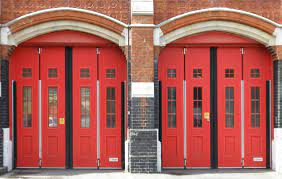In the realm of building safety, fire doors stand as crucial components that play a pivotal role in protecting lives and property. As fire incidents pose a constant threat, the responsibility falls on fire door manufacturers to craft reliable and resilient solutions. This blog delves into the significance of fire doors, the role of fire door manufacturers, and the evolving landscape of fire safety in modern construction.
The Importance of Fire Doors:
Fire doors serve as the first line of defense against the spread of flames and smoke during a fire. Beyond their obvious function, these doors also provide occupants with a safe means of escape. It is, therefore, imperative that fire doors meet stringent safety standards to ensure their effectiveness in real-life emergency situations.
Key Characteristics of Quality Fire Doors:
- Fire Resistance: The primary function of a fire door is to withstand the intense heat of a fire. Manufacturers must meticulously design doors using materials that can endure high temperatures, preventing the fire from spreading to other parts of the building.
- Smoke Control: Effective fire doors are equipped to minimize the passage of smoke, a common cause of respiratory issues and reduced visibility during a fire. Manufacturers incorporate seals and gaskets to ensure airtightness and prevent smoke infiltration.
- Self-Closing Mechanisms: Fire doors should be equipped with reliable self-closing mechanisms. This ensures that the door automatically closes after use, preventing the rapid spread of fire and smoke.
- Durability: Fire doors must withstand the test of time, requiring durable materials and construction. Manufacturers should focus on quality craftsmanship to ensure longevity and sustained performance.
The Role of Fire Door Manufacturers:
- Compliance with Standards: Fire door manufacturers play a crucial role in ensuring that their products meet or exceed local and international safety standards. This includes compliance with regulations such as NFPA (National Fire Protection Association) and building codes.
- Innovative Design: As technology advances, fire door manufacturers are challenged to incorporate innovative design elements without compromising safety. This may involve the use of new materials, improved locking mechanisms, and smart technologies to enhance overall performance.
- Customization: Different buildings have unique requirements, and fire door manufacturers must be adaptable to various specifications. Customization options in terms of size, finish, and design ensure that fire doors seamlessly integrate into diverse architectural settings.
- Education and Training: Manufacturers can contribute to improved fire safety by providing education and training materials for architects, builders, and end-users. This helps in raising awareness about the proper installation, use, and maintenance of fire doors.
Evolving Trends in Fire Safety:
- Integration with Building Automation Systems (BAS): Fire doors are increasingly becoming part of integrated building automation systems, allowing for centralized control and monitoring.
- Energy Efficiency: Manufacturers are exploring ways to enhance the energy efficiency of fire doors without compromising their fire-resistant properties, contributing to sustainable building practices.
- Data-Driven Maintenance: IoT-enabled sensors on fire doors provide valuable data for predictive maintenance, ensuring that doors remain in optimal condition over time.
